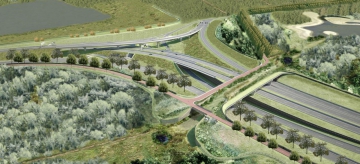

Participatory environmental impact assessment of the Oosterweel link
Questions? Let's get in touch.
The Oosterweel link
From 2011 until 2019, Antea Group was responsible for carrying out several environmental impact assessments in the margin of the Oosterweel link project in Antwerp. This consisted of the coordination of the environmental impact assessment of the plans (plan-MER) for the draft regional land use plan (GRUP, Gewestelijk Ruimtelijk Uitvoeringsplan) regarding changes to the Oosterweel link. At a later stage, from 2015 until 2019, the project EIAs in the margin of the applications for planning permission were established for the infrastructure works on the Left Bank/Linkeroever and the Oosterweel link itself. A participatory approach was implemented, to develop designs of reasonable alternatives and obtain an optimised and widely-supported preferred design, in close consultation with all the stakeholders. This was done by organising Werkbanken (or workshops), supervised by the intendant in charge of the plans for the covering of Antwerp’s Ring road.

